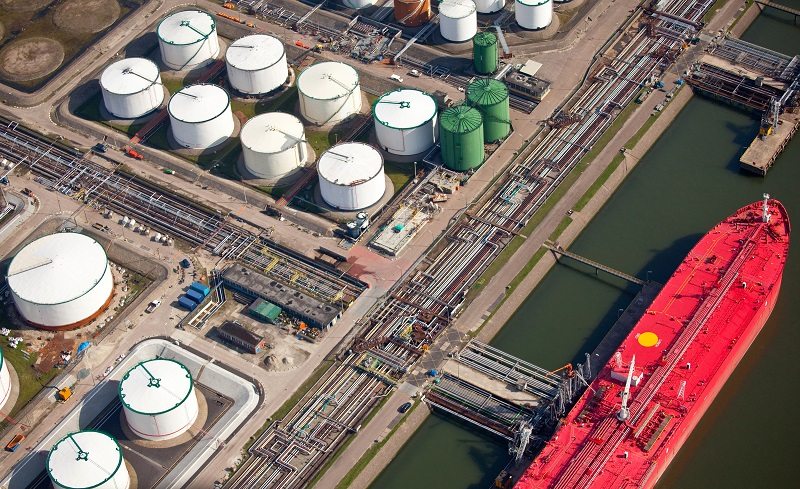

As governments and international organisations increasingly combine efforts to back their commitments to sustainability with concrete measures, one initiative that carries significant implications for businesses worldwide is the 2020 IMO sulphur fuel regulation.
The regulation, due for full implementation by January 2020, is calling for the reduction of sulphur content in marine bunker fuel from 3.5% to 0.5% or below – in line with global targets to reduce the release of greenhouse gases and other harmful emissions.
However, as one of the most potentially disruptive product quality change in decades, the switch to a compliant low-sulphur bunker fuel is also expected to cost the shipping industry billions of dollars globally, causing freight rates to go up and raising costs down the line.
As one of the most heavily export-oriented industries in the region, with 83% of chemical output being shipped to over 100 countries worldwide, the GCC chemical industry will be heavily impacted as major pressure would be put on its supply chain costs.
When low-sulphur fuel became compulsory in northern Europe and the US in 2015, Maersk Line introduced “low-sulphur surcharges” ranging between $15/TEU (twenty-foot equivalent unit) and $80/TEU, depending on the route. Assuming a parallel scenario, export freight rates for GCC producers could rise by as much as 10% to $1,688.
Regional perspective
In the Gulf, where both Saudi Arabia and Kuwait are signatories to the IMO, but the UAE is yet to sign, bunker costs across all shipping sectors could rise to 70-80% of total voyage expenses, with the lion’s share of the increase likely to be absorbed by the customer.
And since the regional chemical industry has one of the longest and most costly supply chains, it could see freight rates transportation rise to 6% of the total value of chemicals sales, up from 5% previously.
Since warehousing typically account for a further 3.5% of total sales value, while other logistics expenses account for a further 1.5%, the chemical industry’s supply chain costs could increase to 11% of landed products prices.
Compliance with the new fuel specification will also involve significant costs for the refining and shipping industries; it will also influence all shippers, who would face significant compliance costs by having to upgrade equipment or switch to more expensive fuels.
By some estimates, in a full compliance scenario, shipping costs could rise by up to $60 billion annually from 2020 onward.
According to consultancy firm Wood Mackenzie, switching to marine gas oil (MGO) will be a more costly solution, and at 100% adoption would see freight rates go up by around $1/barrel.
Impact on GCC projects
Greenfield upgrading investments from refiners are unlikely to be purely driven by the IMO regulation, and there is a need to look at longer-term rationale and strategic fit of these projects.
For refiners choosing not to invest, the focus should be on infrastructure to capture the opportunity from their existing configuration and internal streams.
Changes in refined product spreads will affect crude producers’ sales netbacks, while chemical producers will see the cost of their oil-based feedstocks also change.
Market price for crude oil and naphtha feedstocks are likely to rise as the refining system increases crude runs to supply the additional demand for distillate bunker fuels and also pushes some volume of high-sulphur fuel oil to the power sector.
The gasoline crack spread, and associated naphtha to crude crack spread, is projected to increase, while FCC propylene production is likely to decline.
The aromatics and olefins chains are closely connected to the refining chain, and the IMO bunker quality changes are significant enough to substantively move refined product price relationships.
Shifting market dynamics
The new IMO specification change will create both winners and losers, with the winners being the highly complex refineries and refiners with deep conversion/distillate-oriented configurations.
Refiners, particularly in the US and China, will also benefit from the changes by capturing the value of their ULSFO component streams and growing their share of the global bunker market.
Confronted with a more level playing field, GCC chemical producers will need to examine additional opportunities to improve their performance by pursuing excellence across manufacturing, marketing and sales, and capital productivity.
Manufacturing excellence programmes, for instance, can drive gains in margins through improved variable and fixed costs; they can also help to unlock further production capacity through improvements in plant reliability and throughput.
Effective marketing and sales excellence can drive more effective pricing and raise margins, while a more granular understanding of markets and a more effective allocation of marketing and sales resources can support volume growth.
Capital productivity or CAPEX excellence can meanwhile ensure that future investments are fit for purpose and delivered on budget and on time.
Overall, the 2020 IMO sulphur fuel regulation will add to the challenges of an already challenging market, but it will also add further impetus for the petrochemicals industry to adapt and develop.
Related content: Why the integrated complex is the future
About the author
|
You might also like...

Contractors win Oman Etihad Rail packages
23 April 2024

Saudi market returns to growth
23 April 2024

Middle East contract awards: March 2024
23 April 2024

Swiss developer appoints Helvetia residences contractor
23 April 2024
A MEED Subscription...
Subscribe or upgrade your current MEED.com package to support your strategic planning with the MENA region’s best source of business information. Proceed to our online shop below to find out more about the features in each package.






